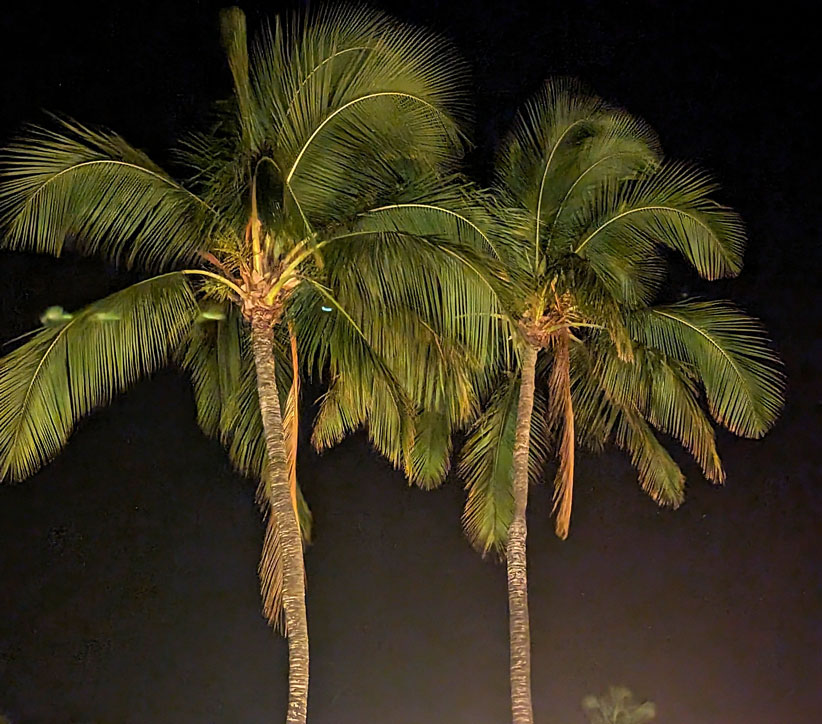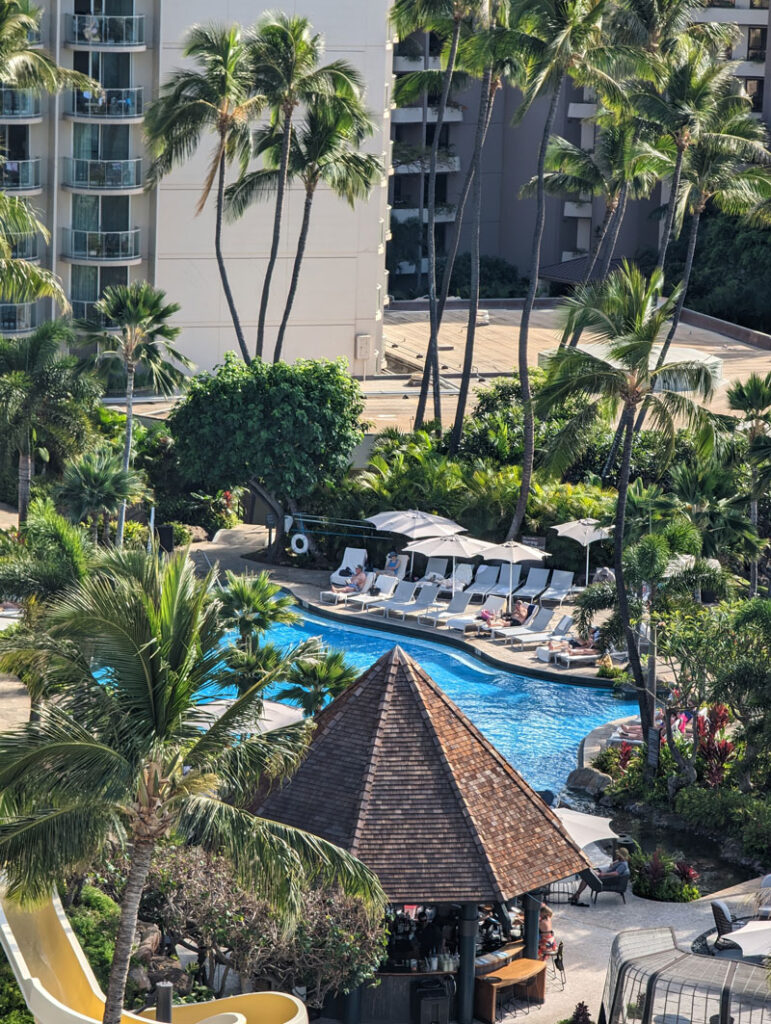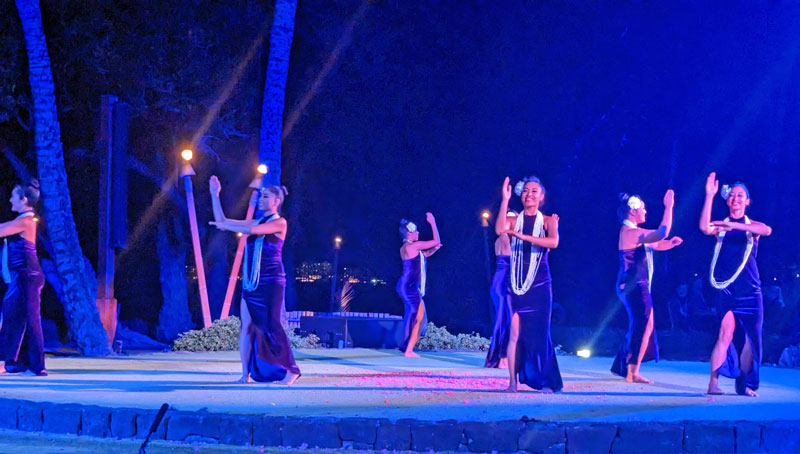
During the first few days on the Hawaiian Islands, you don’t notice it’s prevalence. After that, you feel as if you’ve encountered it at least once before the clock strikes midnight. Over the Rainbow might as well be Hawaii’s state song. Israel Kamakawiwo’ole, better known as Iz, came up with his own very lovely version of the song in the 80s and it’s Iz’s poetic interpretation that’s been popularized ever since. You hear it on the radio, at luau’s, through the sound systems of restaurants and sung live on the stages of luxury resorts. Tender and soft with a whisper of melancholy, this Rainbow defines an aspect of the islands that gets lost in our infatuation with beautiful beaches and idyllic island breezes.
Other than being an ideal place to hide from winter, right now is whale season on Maui which hugely amplifies the island’s appeal. The Westin resort in Lahaina is probably typical of those joining it along the island’s northwest coast. Having recently undergone a $170,000,000 renovation, the complex teems with exceptional beauty and incredible diversions. Placid and serene from the front, when you cross the threshold into its communal spaces the resort turns into a self-contained city whose only purpose is to generate pleasure.
The timeless grandeur of the Pacific Ocean is both the backdrop and the chief source of fascination for the throngs who flock to comfort bastions like the Westin. This world is not exclusionary, provided you can pay. With the average room rate kissing $800 nightly, resorts like the Marriott owned Westin will remain a distant aspiration for many. But from early morning to night, those with the resources stroll the graceful promenade hugging the beach without a hint of care. Their age ranges and cultural origins are broad. Some ride in baby strollers pushed by doting parents. Others move more gingerly or enlist the use walking aids to navigate the winding pathway leading to shops, lounge chairs, tour check-ins, plentiful dining options and the ever-present ocean. In between are the overwhelming majority just at the beginning or at the pinnacle of their productive years. Just weeks after the Christmas holidays, there’s also an abundance of children joining their parents as they shun the obligations and demands of everyday life for a few days of healing sunshine in paradise.

For those who prefer tamer waters, an 87,000-square foot wonderland of heated pools sits at the center of the complex, just feet from the ocean itself. Some feature waterfalls and grottoes, others cater to children with slides and fanciful sprinklers. One of the adult pools sports a bar that usually goes under used. Terraced tropical landscaping insulates the pools from one another and has the effect of creating an island within and island. Stunning during the day, at night the visual impact of the space is spectacular.
Two spots along the beach are used by catamarans to pick up passengers for whale spotting excursions. Shorts are recommended because you must wade into the water to take the few steps up to the vessel’s deck. These tours often ask passengers to board barefoot and remain to keep decks as free of sand as possible. Depending on the aggressiveness of the surf, these expeditions can be and sometimes are concealed by the tour company. If they are, a sunset dinner on a sailboat offers another very effective way to commune with humpback mothers and their young.
Dining options may not be as interesting as you might expect. Because so much is imported, the islands are notoriously expensive. But with the ocean surrounding it, tourists usually think the options for seafood would be far superior to the mainland. Expect to only see Mahi Mahi and Ahi tuna as fish choices on just about every menu you encounter. If these limitations reflect an effort to advance overall fish population sustainability, the restrictions become less onerous.

For authenticity, the Old Lahaina Luau may be your best bet to approach and appreciate the uniqueness of the Hawaiian diet. It’s presented every day of the week and attracts more than three hundred people nightly. As well tuned as a Maserati, it’s one of the slickest dinner and a show you’re likely to experience. Along with appetizers, dessert and drinks, the five-course preset dinner includes a traditional Hawaiian course and a main (land) course. Both are impressive. The roasted pig cooked Hawaiian style (Pua’a Kalua) in an underground oven stands up to its succulent billing. It’s also masterfully seasoned, letting the sweetness of the pork shine on its own. Another pork item, Lau lau, comes wrapped in a taro leaf that shares the flavor notes of spinach. Because of its complexity, it rivals the Pua’a Kalua in flavor and enjoyment. Of course, there’s poi, that purple root vegetable that defines Hawaii’s gastronomical heart. At the Old Lahaina Luau, it’s neither bland or starchy and is paired with dishes that highlight its distinctiveness and versatility. A narrative history of the islands and the hula accompany the highly professional dance program.
A short 30-minute flight away from Maui lands you on Kona, or the big Island. Kona’s feel and personality are much different than Maui’s. The island’s interior has a more muscular texture and it’s where more than two million people travel every year to experience volcanoes. Kilauea erupted in December of last year and then more recently in early January. Now it’s simmers and shoots up lava plumes 30 feet in the air. Located in a rain forest, Kilauea’s terrain is rough and often wet. Traveling to see it as magma boils and bursts in its crater can be uncomfortable and even challenging. Capturing something so primordial and so powerful more than compensates for the trek to experience it. Like all of nature’s incomparable spectacles, it inspires unforgettable awe and reflection.
To get closer to the land, a horseback ride to an isolated swimming hole does what the road to Hana accomplishes on Maui. It introduces you to how much human settlement has impacted the island. Today, only 10 percent of Hawaii’s trees and other flora are native to the islands. Kilauea and the many of the zip lining and horseback riding opportunities are on Kona’s eastern side. The island’s rainy side. Resorts hug the western coast where it’s much drier. Properties like the Fairmont in Waimea are chic enclaves. Low key and plush, occupancy is restrained and although it skews older; the presence of children can still be pervasive. Walking, running and biking paths are ample, but they are also far too close to car traffic. For another form of staying fit, Sonny and other yoga instructors provide highly professional and surprisingly demanding classes on grassy plots facing the sea. However you choose to exercise, by the afternoon or evening, you’ll return to the ocean for spiritual soothing.